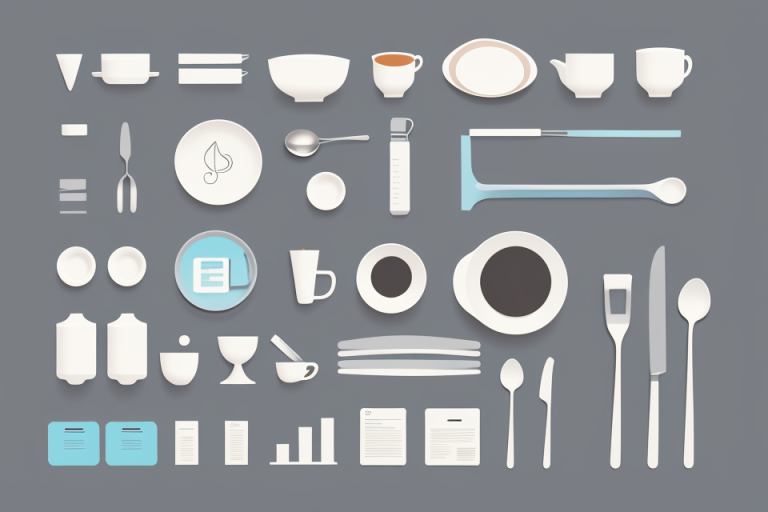Expert Tips for Avoiding Common Pitfalls in Portion Control
Portion control is an essential aspect of maintaining a healthy diet, but it can be challenging to get right. Many people struggle with portion control, often eating more than they should. This can lead to weight gain, poor health, and other issues. To help you avoid these common pitfalls, experts offer some valuable tips for portion control. By following these tips, you can enjoy your favorite foods without compromising your health. So, let’s dive in and explore the expert tips for avoiding common pitfalls in portion control.
Understanding Portion Control Mistakes
Overestimating serving sizes
When it comes to portion control, one of the most common mistakes people make is overestimating serving sizes. This can lead to consuming more calories than intended and hindering weight loss efforts. To avoid this pitfall, it’s important to understand the common mistakes people make when estimating serving sizes and how to properly measure them.
Common mistakes when estimating serving sizes
One of the most common mistakes people make when estimating serving sizes is using inaccurate measuring tools. For example, using a tablespoon that is too large or a cup that is too small can lead to overestimating the amount of food being consumed. Additionally, people often use visual cues, such as a handful or a pile, to estimate serving sizes, which can be unreliable and lead to overconsumption.
The importance of using measuring tools
To accurately estimate serving sizes, it’s important to use proper measuring tools. This includes using a food scale to measure ingredients and a measuring cup or spoons to measure out portions. This will help ensure that you are consuming the appropriate amount of food for your calorie needs and weight loss goals.
Examples of proper serving sizes for different foods
Here are some examples of proper serving sizes for different foods:
- Grains: 1/2 cup of cooked rice, pasta, or cereal
- Protein: 3-4 ounces of cooked meat, poultry, or fish
- Vegetables: 1 cup of raw leafy greens or 1/2 cup of cooked vegetables
- Fruits: 1 medium-sized fruit or 1/2 cup of cut-up fruit
By understanding these proper serving sizes and using accurate measuring tools, you can avoid overestimating serving sizes and improve your portion control efforts.
Eyeballing portions
When it comes to portion control, many people rely on their eyes to estimate the appropriate serving size. However, eyeballing portions can be deceiving and lead to overeating or underestimating the amount of food consumed. Here are some risks and benefits of eyeballing portions, as well as tips for accurately portioning food.
- The risks of eyeballing portions
Eyeballing portions can be risky because our eyes can play tricks on us. For example, a study published in the Journal of the Academy of Nutrition and Dietetics found that people tend to underestimate the amount of food they are served when it is presented in larger portions, even if they are aware of the appropriate serving size. This can lead to overeating and weight gain over time.
Another risk of eyeballing portions is that it can be difficult to accurately estimate the appropriate serving size for certain foods. For example, a small portion of pasta or rice may look large on a plate, but it may not be enough to satisfy hunger. On the other hand, a large portion of these foods may be too much for one person to eat in one sitting.
- The benefits of using measuring tools
Using measuring tools, such as a food scale or measuring cups, can help to ensure that you are consuming the appropriate amount of food. This is especially important when trying to lose weight or maintain a healthy weight. By measuring your portions, you can control the amount of calories, fat, and other nutrients that you consume.
Measuring tools can also help to reduce food waste. When you eyeball portions, you may end up with too much or too little food. This can lead to waste, especially if you are trying to stick to a specific diet or meal plan. By measuring your portions, you can ensure that you are using the right amount of food and minimizing waste.
- Tips for accurately portioning food
If you want to accurately portion your food, here are some tips to keep in mind:
- Use measuring tools: As mentioned above, using measuring tools can help to ensure that you are consuming the appropriate amount of food.
- Be mindful of serving sizes: Different foods have different recommended serving sizes. For example, a serving of pasta is typically about 1/2 cup cooked, while a serving of protein is typically about 3-4 ounces.
- Portion out foods before cooking: To avoid overeating, portion out your food before cooking. This can help you to stick to your portion size and avoid mindless snacking.
- Pay attention to serving dishes: The size of your serving dish can also affect your portion size. If you use a large plate or bowl, you may be more likely to overeat. Try using smaller dishes to help you control your portion size.
By avoiding the risks of eyeballing portions and using these tips for accurately portioning food, you can help to control your calorie intake and maintain a healthy weight.
Not accounting for individual needs
One of the most common mistakes people make when it comes to portion control is not taking into account their individual needs. It’s important to understand that everyone is different and has unique requirements when it comes to food intake. Factors such as age, gender, activity level, weight, and medical conditions can all play a role in determining the appropriate portion sizes for each individual.
Here are some factors that affect portion sizes:
- Age: As we age, our metabolism slows down, and our bodies require fewer calories to maintain weight. Therefore, older adults may need to consume smaller portions than younger individuals.
- Gender: Men typically have more muscle mass and a higher basal metabolic rate than women, which means they may require more calories to maintain weight. However, women have a higher percentage of body fat and may need to be more mindful of portion sizes to avoid weight gain.
- Activity level: People who are more active may require more calories to fuel their bodies. Therefore, athletes and people with physically demanding jobs may need to consume larger portions to meet their energy needs.
- Weight: People who are overweight or obese may need to consume smaller portions to lose weight. Consuming the same portion sizes as someone who is at a healthy weight may lead to overeating and weight gain.
- Medical conditions: Certain medical conditions, such as diabetes or heart disease, may require individuals to follow specific dietary guidelines. These guidelines may include specific portion sizes for certain foods.
It’s important to understand that there is no one-size-fits-all approach to portion control. Individualized portion control takes into account each person’s unique needs and circumstances. By adjusting portion sizes based on personal needs, individuals can ensure they are getting the right amount of nutrients and energy to fuel their bodies without going overboard.
Common Portion Control Strategies
Plate-based portion control
The concept of plate-based portion control
Plate-based portion control is a strategy that involves using specific-sized plates to control the amount of food served to individuals. This method is based on the idea that people tend to eat more when they are served larger portions, and by using smaller plates, individuals are more likely to consume less food. The concept is rooted in the theory of visual illusion, which suggests that the size of the plate influences the amount of food that is consumed.
Advantages and disadvantages of plate-based portion control
One advantage of plate-based portion control is that it is a simple and cost-effective method for controlling food portions. It can also help to promote mindful eating, as individuals are more likely to pay attention to the amount of food they are consuming when using smaller plates. However, this method may not be effective for everyone, as some individuals may still consume excessive amounts of food even when using smaller plates.
Another disadvantage of plate-based portion control is that it may not be practical for all food types. For example, it may be difficult to use smaller plates for certain types of food, such as salads or pasta dishes, where a large amount of food is required to make the dish.
Examples of plate-based portion control in practice
Plate-based portion control is used in many restaurants and cafeterias as a way to control food portions. Some establishments use plates that are specifically designed to control portion sizes, while others use standard-sized plates but place specific amounts of food on them. This method is also used in some homes, where individuals use smaller plates to control their food portions.
Overall, plate-based portion control is a useful strategy for controlling food portions, but it may not be effective for all individuals or food types. It is important to consider the advantages and disadvantages of this method and to use it in conjunction with other portion control strategies to achieve the best results.
Measure-based portion control
The concept of measure-based portion control
Measure-based portion control is a strategy that involves measuring the food before serving it. This approach ensures that individuals are aware of the portion size and can monitor their food intake more effectively. Measure-based portion control is a simple yet effective method for managing food portions, particularly for individuals who are trying to maintain a healthy diet or lose weight.
Advantages and disadvantages of this method
One of the primary advantages of measure-based portion control is that it provides a clear understanding of the appropriate portion size for different types of food. This approach also promotes mindful eating habits and can help individuals make better food choices. Additionally, this method can be used in conjunction with other portion control strategies, such as using smaller plates or bowls, to further enhance the effectiveness of the approach.
However, there are also some potential disadvantages to measure-based portion control. For example, this method may not be suitable for individuals who eat quickly or who are distracted while eating, as they may not accurately measure their food. Additionally, some individuals may find this approach to be time-consuming or inconvenient, particularly if they are trying to prepare meals for a large group of people.
Examples of measure-based portion control in practice
Measure-based portion control can be implemented in a variety of ways, depending on the individual’s preferences and lifestyle. For example, individuals can use measuring cups or spoons to portion out their food, or they can use food scales to weigh their portions. Some individuals may also find it helpful to use measuring tape or a ruler to measure the size of their portions.
Measure-based portion control can be applied to a wide range of foods, including grains, vegetables, fruits, and proteins. For example, individuals can measure out a specific amount of rice or pasta, such as 1/2 cup, and pair it with a specific amount of protein, such as 3 ounces of chicken or fish. This approach can help individuals control their overall calorie intake and ensure that they are consuming a balanced diet.
In conclusion, measure-based portion control is a simple yet effective strategy for managing food portions. While this approach has some potential disadvantages, it can be an effective tool for individuals who are trying to maintain a healthy diet or lose weight. By using measuring cups, spoons, scales, or other tools, individuals can ensure that they are consuming appropriate portion sizes and promoting healthy eating habits.
Mindful eating
Mindful eating is a strategy that involves paying attention to the food you are eating, including the taste, texture, and smell. This practice can help you develop a better understanding of your body’s hunger and fullness cues, leading to more accurate portion sizes. Here are some tips for practicing mindful eating:
- Eat slowly: Take the time to savor each bite and enjoy the experience of eating. This can help you feel more satisfied with smaller portions.
- Pay attention to your food: Focus on the flavors and textures of your food. This can help you become more aware of when you’re full and reduce the likelihood of overeating.
- Use smaller plates: Using smaller plates can help you eat smaller portions, as you’ll feel like you have more food on your plate.
- Practice portion control: Mindful eating doesn’t mean you can’t enjoy your favorite foods. It’s important to practice portion control and be mindful of the amounts you’re eating.
- Listen to your body: Pay attention to your body’s hunger and fullness cues. If you’re feeling hungry, eat. If you’re feeling full, stop.
By practicing mindful eating, you can develop a better understanding of your body’s hunger and fullness cues, leading to more accurate portion sizes and a healthier relationship with food.
Overcoming Portion Control Challenges
Environmental factors
Environmental factors play a significant role in portion control. Understanding how the environment can influence portion sizes is crucial in developing effective strategies for dealing with environmental portion control challenges. Here are some key points to consider:
- How the environment can influence portion sizes
- Visual cues: The size of serving dishes, plates, and utensils can influence the amount of food we serve and eat. Larger plates and bowls can make portion sizes appear smaller, leading to overeating.
- Food availability: The availability of food in the environment can also impact portion sizes. Buffets, all-you-can-eat restaurants, and workplace snack options can encourage overeating.
- Social norms: The behaviors of those around us can influence our own portion sizes. For example, if our friends or colleagues eat large portions, we may feel pressure to do the same.
- Strategies for dealing with environmental portion control challenges
- Use smaller plates and bowls: Using smaller serving dishes can help control portion sizes. This simple trick can help prevent overeating and promote a healthier relationship with food.
- Plan ahead: If you know you’ll be in an environment with unhealthy food options, plan ahead and bring your own healthy snacks. This can help you resist the temptation of overeating.
- Choose healthier options: When presented with food options, choose the healthier options available. Opt for salads, fruits, and vegetables instead of high-calorie options like fried foods and desserts.
- Examples of environmental portion control success stories
- Schools: Some schools have implemented portion control strategies, such as offering smaller plates and reducing the availability of unhealthy snacks. These strategies have been shown to improve children’s dietary habits and reduce obesity rates.
- Restaurants: Some restaurants have also implemented portion control strategies, such as offering smaller portion sizes or providing a “split plate” option. These strategies have been shown to reduce calorie intake and promote healthier eating habits.
Social influence
- The impact of social influence on portion sizes
Humans are inherently social creatures, and our behavior is often influenced by our social environment. This includes the people we surround ourselves with, as well as cultural and societal norms. One significant factor that impacts portion sizes is social influence. Research has shown that when individuals eat with others, they tend to consume more food than they would if they were alone. This is due to a variety of factors, including the desire to fit in, conform to social norms, and avoid appearing rude or ungrateful.
- Strategies for dealing with social pressure around food
It’s essential to recognize the impact of social influence on portion sizes and develop strategies for dealing with social pressure around food. Here are some tips:
- Be aware of your own food preferences and needs. Eat what you enjoy and feel comfortable with, rather than trying to fit in with others.
- Be mindful of social cues. Pay attention to the portion sizes that others are eating and the social cues that suggest how much food is expected or acceptable.
- Communicate your needs. If you are unsure about the appropriate portion size or want to eat less than others, communicate your needs clearly and politely.
- Find a supportive dining companion. Eating with someone who supports your healthy eating goals can help you resist social pressure and make healthier choices.
-
Host your own meals. If you are in control of the meal, you can prepare portion sizes that align with your needs and preferences.
-
Examples of overcoming social influence in portion control
Overcoming social influence in portion control requires awareness, communication, and assertiveness. Here are some examples of how individuals have successfully overcome social pressure around food:
- A person who prefers smaller portion sizes may communicate their needs to their dining companions, explaining that they feel fuller with smaller portions and asking for a smaller serving.
- Another person may choose to eat at a different time or in a different location if they know they will be surrounded by people who eat larger portions.
- Some individuals may opt to bring their own food to social gatherings, ensuring that they have a healthy and appropriate portion size.
By recognizing the impact of social influence on portion sizes and developing strategies for dealing with social pressure around food, you can make healthier choices and avoid overeating.
Emotional eating
Emotional eating is a common challenge faced by many individuals in their portion control journey. It refers to the tendency to eat when not hungry, but rather in response to emotions such as stress, boredom, or sadness. This can lead to overeating and difficulty in adhering to appropriate portion sizes.
- The role of emotions in portion control:
Emotions play a significant role in our eating behaviors. Stress, anxiety, and depression are some of the most common emotions that can trigger overeating or mindless snacking. These emotions can lead to a loss of control over food intake, resulting in excessive consumption and difficulty in adhering to appropriate portion sizes. - Strategies for dealing with emotional eating triggers:
Identifying and dealing with emotional eating triggers is essential in overcoming this challenge. Some strategies include:- Keeping a food diary to track emotional eating triggers and patterns.
- Engaging in alternative coping mechanisms such as exercise, meditation, or talking to a friend.
- Developing a plan for healthy snacking options that can be turned to when emotional eating triggers arise.
- Examples of managing emotional eating in portion control:
Individuals can use various techniques to manage emotional eating in their portion control journey. Some examples include:- Mindful eating techniques such as eating slowly and paying attention to hunger and fullness cues.
- Setting appropriate portion sizes and sticking to them, regardless of emotions.
- Seeking support from a therapist or support group to address underlying emotional issues that may be contributing to emotional eating.
By understanding the role of emotions in portion control and implementing strategies to deal with emotional eating triggers, individuals can overcome this common challenge and achieve success in their portion control journey.
Maintaining Portion Control Success
Tracking progress
Tracking progress is a crucial aspect of maintaining portion control success. By regularly monitoring your progress, you can identify areas where you may be struggling and make necessary adjustments to your portion control strategies. Here are some expert tips for making progress tracking effective:
- Use a food diary: Keeping a food diary is a simple and effective way to track your progress. You can record the foods you eat, the portion sizes, and any emotions or situations that may have influenced your food choices. This can help you identify patterns in your eating behavior and make more informed decisions about portion sizes.
- Use portion control tools: There are many apps and devices available that can help you track your portion sizes. These tools can provide visual cues, such as a portion size indicator or a food scale, to help you measure out appropriate portions. Some popular apps include MyFitnessPal, LoseIt, and FatSecret.
- Set realistic goals: When setting goals for portion control, it’s important to be realistic. Setting unattainable goals can lead to feelings of failure and discourage you from continuing your portion control efforts. Instead, set small, achievable goals that you can work towards gradually. For example, you might start by aiming to reduce your portion size by 10% and gradually increase this amount over time.
- Be consistent: Consistency is key when it comes to tracking progress. Try to track your progress on a daily basis, or at least several times a week. This can help you stay on top of your portion control efforts and make adjustments as needed.
- Be honest: It’s important to be honest with yourself when tracking your progress. Don’t try to hide or downplay any slip-ups or overeating episodes. Instead, use these instances as opportunities to learn and make adjustments to your portion control strategies.
By following these expert tips, you can effectively track your progress and maintain your portion control success over time.
Setting realistic goals
When it comes to portion control, setting realistic goals is crucial for success. By setting achievable goals, you can create a sustainable and healthy eating pattern that is easier to maintain in the long run. Here are some tips for setting realistic goals for portion control:
The benefits of setting realistic goals in portion control
- Improved adherence: Setting realistic goals for portion control can lead to improved adherence to the desired eating pattern. When goals are achievable, individuals are more likely to stick to them, leading to sustained weight loss or maintenance.
- Reduced feelings of deprivation: Setting realistic goals can help reduce feelings of deprivation that often accompany dietary changes. Unrealistic goals can lead to feelings of failure, which can cause individuals to abandon their efforts altogether.
- Increased motivation: Setting realistic goals can increase motivation to continue with the eating pattern. Achieving small successes along the way can provide a sense of accomplishment and reinforce the desire to continue with the effort.
How to set achievable goals for portion control
- Start small: Start by setting small, achievable goals. For example, instead of aiming to eat only 100 grams of protein per day, start with 80 grams and gradually increase over time.
- Be specific: Be specific about the goal. Instead of saying “eat less,” say “eat 200 grams of vegetables at each meal.”
- Be realistic: Be realistic about the goal. Consider factors such as time, budget, and access to healthy foods when setting goals.
- Set a timeline: Set a timeline for achieving the goal. This can help create a sense of urgency and keep you on track.
Examples of successful goal-setting in portion control
- Weight loss: A person aiming to lose weight may set a goal to eat 500 fewer calories per day. They could achieve this by reducing their portion sizes, choosing healthier foods, and increasing physical activity.
- Healthy food choices: A person aiming to eat more healthy foods may set a goal to eat 5 servings of fruits and vegetables per day. They could achieve this by incorporating more fruits and vegetables into their meals and snacks.
- Improved nutrient balance: A person aiming to improve their nutrient balance may set a goal to eat more protein and fiber. They could achieve this by increasing their intake of lean protein sources and incorporating more fiber-rich foods into their meals.
Seeking support
Maintaining portion control is a challenging task that requires a lot of dedication and discipline. One of the most effective ways to ensure success in portion control is by seeking support from different sources. Here are some tips for seeking and utilizing support in portion control:
The value of support in maintaining portion control
Support is essential when it comes to maintaining portion control. It can help you stay motivated, accountable, and on track with your goals. Having someone to share your progress, challenges, and successes with can make a significant difference in your journey towards portion control.
Different sources of support
There are several sources of support that you can tap into when it comes to maintaining portion control. These include:
- Friends and family: They can provide emotional support, motivation, and accountability. You can also share your meal plans and progress with them, and they can offer feedback and encouragement.
- Professionals: Registered dietitians, nutritionists, and fitness trainers can provide expert advice, guidance, and support. They can help you develop a personalized plan that suits your needs and goals.
- Online communities: There are several online communities, forums, and support groups that focus on portion control and healthy eating. These communities can provide a platform for sharing experiences, advice, and support.
Tips for seeking and utilizing support in portion control
Here are some tips for seeking and utilizing support in portion control:
- Be honest and open: When seeking support, be honest and open about your goals, challenges, and struggles. This will help your support system understand your needs and provide the right kind of support.
- Share your progress: Share your progress with your support system regularly. This will help you stay accountable and motivated.
- Ask for feedback: Ask for feedback from your support system. They can offer valuable insights and suggestions that can help you improve your portion control skills.
- Seek professional help: If you are struggling with portion control, seek professional help. Registered dietitians, nutritionists, and fitness trainers can provide expert advice and guidance.
In conclusion, seeking support is essential when it comes to maintaining portion control. It can help you stay motivated, accountable, and on track with your goals. There are several sources of support, including friends and family, professionals, and online communities. By seeking and utilizing support effectively, you can increase your chances of success in portion control.
FAQs
1. What are some common pitfalls to avoid in portion control?
Answer:
There are several common pitfalls to avoid when practicing portion control. One of the most important is not using proper measuring tools. Using a kitchen scale or a measuring cup can help ensure that you are serving the correct portion size. Another common mistake is serving food on large plates, which can make it difficult to gauge the appropriate portion size. Additionally, people often make the mistake of consuming too many calories from liquids, such as soda or alcohol, which can add up quickly and lead to overeating. Finally, skipping meals or drastically reducing calorie intake can lead to overeating later in the day, so it’s important to maintain a balanced diet and not restrict calories too much.
2. How can I control my portion sizes when eating out?
Eating out can be a challenge when it comes to portion control, but there are several strategies that can help. One is to choose smaller plate sizes, which can help you avoid overloading your plate with too much food. Another is to share a meal with a friend or colleague, which can help reduce the overall amount of food consumed. Additionally, ordering a side salad or appetizer as a main course can help control portion sizes and provide more variety in your meal. Finally, asking for a take-home box can help you save leftovers for later, rather than feeling pressured to finish everything on your plate.
3. What are some healthy portion sizes for different foods?
There are many different healthy portion sizes for different foods, and it’s important to pay attention to the specific serving sizes recommended by nutrition experts. For example, a healthy portion of protein such as chicken or fish is about 3-4 ounces, or about the size of a deck of cards. A healthy portion of vegetables is about 1 cup, and a healthy portion of carbohydrates such as rice or pasta is about 1/2 cup. It’s also important to pay attention to portion sizes when it comes to snacks, such as nuts or fruit, which should be limited to about a handful or a small serving. Finally, it’s important to remember that portion sizes can vary depending on the specific food and the individual, so it’s important to pay attention to how your body feels and adjust your portion sizes accordingly.






